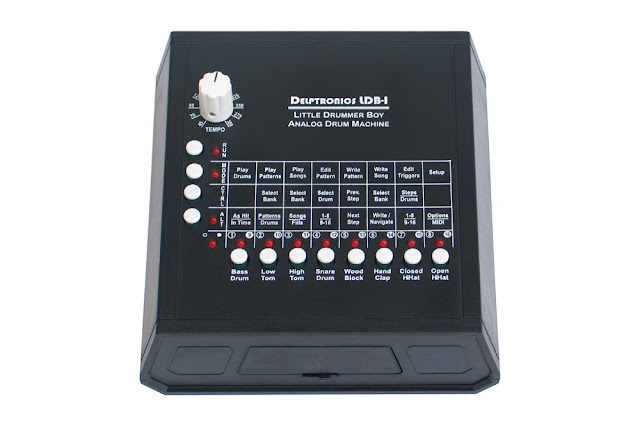
via this auction
"The Telemark provides exactly the same features as the Semblance, but with the addition of modular synth patch points. This in effect turns it into a semi-modular design and means it can be interfaced to other modules and synths very easily.
The Telemark is a sturdily made white metal wedge, populated on the left side of the panel by lots of knobs and a few LEDs. The right side is devoted to a series of 1/8" sockets designed to provide access to core points in the synth's signal path. The back panel has a small socket for the supplied external PSU, MIDI input/thru, as well as 1/4" jack sockets for the main audio output and 2 external audio inputs.
The Telemark is an easy-to-use and fine-sounding synth, which is capable of a wide range of sounds. It uses the patch panel to add another dimension and offers some great options for processing external audio as well as transforming the internal palette. The MIDI spec gives the Telemark the ability to respond to both note on/off and velocity information for VCA and VCF sections. The patch panel allows you to route these elsewhere should you need to and a MIDI controller can be assigned to modulation duties should you wish.
The Telemark is a Oberheim SEM inspired synth like the Anyware Tinysizer, the Semtex XL and the Analogue Solutions Semblance are.
The Telemark-K is similar to original SEM but with Sample and hold, LFO square wave, noise, extra inputs, many more signal modulation options via rotary switches.
Features
Pure analogue voice & modulation circuitry.
MIDI In / Out / Thru
Patch points to allow more sound types, and to cross-patch with your modular synths
SEM type sound.
Similar SEM layout.
More features than the original SEM such as Sample and Hold, LFO Square wave, Noise, extra inputs, many more signal modulation options via rotary switches.
Plenty of modulation possibilities
Rugged steel construction.
MIDI In for software sequencer / keyboard control.
LCD to edit MIDI set-up.
No patch memories! You can be original each time you create a sound."















































